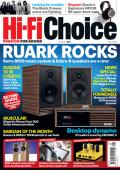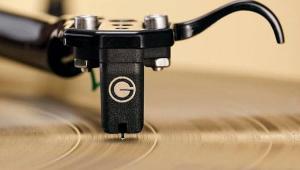Chord Electronics 2go

 When Chord Electronics’ Poly streamer (HFC 431) arrived a couple of years ago, it hooked up to the company’s entry-level Mojo portable DAC/headphone amp (HFC 461) to create arguably the best mobile music maker that money could buy. It really was that good, and all the more impressive because it was just about portable. You could squeeze it into a large pocket or small manbag, and get music on the move that sounded like nothing else around.
When Chord Electronics’ Poly streamer (HFC 431) arrived a couple of years ago, it hooked up to the company’s entry-level Mojo portable DAC/headphone amp (HFC 461) to create arguably the best mobile music maker that money could buy. It really was that good, and all the more impressive because it was just about portable. You could squeeze it into a large pocket or small manbag, and get music on the move that sounded like nothing else around.
Since then, it’s been inevitable that Mojo’s bigger brother – the Hugo 2 (HFC 428) – would get the same treatment. So here it is, the matching 2go streamer. A custom fit for the popular £2,100 DAC, it is also said to work with other digital converters if you add Chord’s 2yu interface (£450), which provides coaxial, optical and USB digital connectivity. Here though, we’re reviewing it with its natural Hugo 2 partner, and the pair doesn’t half make a lovely couple.
The 2go plugs into the Hugo 2 by means of two protruding mini USB plugs on the former and a pair of connector pins that can be screwed into the latter. The two are then bolted together using an Allen key and locking hex screws. This done, it offers full wireless streaming and twin microSD card slots capable of taking memory cards up to 2TB each in size. It also sports a wired (Gigabit) Ethernet socket for connection to the internet, in addition to its 2.4GHz wi-fi and A2DP Bluetooth functionality. It can play digital audio files at up to 32-bit/768kHz PCM and DSD256 resolution, claims Chord.
2go offers Tidal, Qobuz and internet radio playback, with Spotify to follow soon via a firmware update. It’s also Roon Ready and offers gapless audio and DoP/Bit Perfect support, as well as being fully DLNA-compliant (server/renderer) and AirPlay-ready. It plays the usual collection of desirable music files – AAC, WAV, FLAC, AIFF, Ogg Vorbis, Apple Lossless, WMA and MP3.
The 2go gives a choice of powered or portable operation, the latter via its internal rechargeable battery, which offers roughly 12 hours of playback. What’s not to like about such a versatile, high-end music source?
The simple answer is that the Hugo 2/2go combo isn’t quite as easy to configure and use as you’d hope. Initial setup involves much fiddling around, and there’s no native Chord streaming app available. It’s not the end of the world, but it means you’ll have to download a third-party app to play music, like Bubble UPnP. You do get Chord’s Go-Figure app, which acts as a powerful window on its many functions, but it’s still only really half of what’s needed here. To access the microSD card bays, you first have to create MPD playlists via applications like MPDeluxe (iOS), Glider (iOS) or M.A.L.P (Android). You can then reach these playlists from Go-Figure.
Tidal or Qobuz listening means another app – and you can’t listen offline so you have to stream it. This can be done via apps like the aforementioned Bubble UPnP or Volumio, but Roon is the easiest way by far. If you’re a subscriber to Roon, you can use Chord’s Go-Figure app and utilise the Hugo 2/2go as an endpoint – whereupon life gets much easier. Another handy hack is that this combo works with Audirvana. It has a robust wi-fi implementation and can be configured to create its own mobile hotspot, which lets you stream when there are no shared wi-fi connections.
Getting going requires a good deal of thought, but when you’ve followed the procedure the unit works very well. There are a few caveats, though, beginning with the lack of a display. Although it’s possible to learn the Hugo 2/2go’s light show, it would be so much easier just to have a small display showing whether there’s a wi-fi signal lock and at what resolution music is being played.
I have to admit that I’m also a little nervous about the connection between the two units and am constantly aware of paying extra special care not to accidentally snap one from the other.
Meanwhile, its size and weight makes it a good deal less portable than the Mojo/Poly – which itself is less wieldy than a typical modern portable DAC/headphone amplifier like iFi’s hip-dac (HFC 461). Of course, the Mojo/Poly sounds way better and is far more flexible, but in the portable world size and weight matter.
Sound quality
All the concerns about ease of use and portability fade away when you start playing music. It’s also a step change above its Mojo/Poly sibling in terms of sonics, making it surely the best portable streaming DAC money can buy. Whether driving headphones or working as a line-level source in DAC mode, this dynamic duo sounds superb.
For an in-depth explanation of the sound, I refer you to the original review of the Hugo 2, but to summarise it’s wonderfully clean, crisp and detailed, with an excellent, ever-so-slightly on the warm side of neutral tone. It makes music sound vibrant and alive. Talk Talk’s Life’s What You Make It is powerful, large in scale and bristling with detail that will most likely shock even the producer. It plays all this out within an expansive soundstage that belies the small size of the Hugo 2/2go.
I find very little sonic degradation between getting music to the Hugo via a wired connection from a smartphone for example, or by streaming via a network into the 2go when played back in Bubble UPnP. The difference is negligible, although the balance is tipped in favour of the wired connection.
Conclusion
There’s no denying it, the 2go is fussy to setup and use – and also more fragile than I had hoped. Then there’s the price. At nearly £3,000 for the pair you’re getting into really serious sonic territory. But in terms of sound the 2go is really beyond reproach – it makes having a Hugo 2 an even more special thing than it already is. Overall then, an enthusiastic thumbs up – but with some reservations. DP
DETAILS
Product: Chord Electronics 2go
Type: Wireless network streamer
FEATURES
● 32-bit/768kHz and DSD256-capable streaming DAC
● Roon ready; Tidal, Qobuz streaming
● Wi-fi; Bluetooth; AirPlay; Ethernet
 |
Inside this month's issue:
Ruark R610 music system and Sabre-R standmount speakers, PMC twenty.23i Active, floorstanders, English Acoustics Downton preamplifier, Bluesound NODE ICON preamp/streamer, Ortofon Concorde Music Blue MM cartridge and much, much more
|





















































